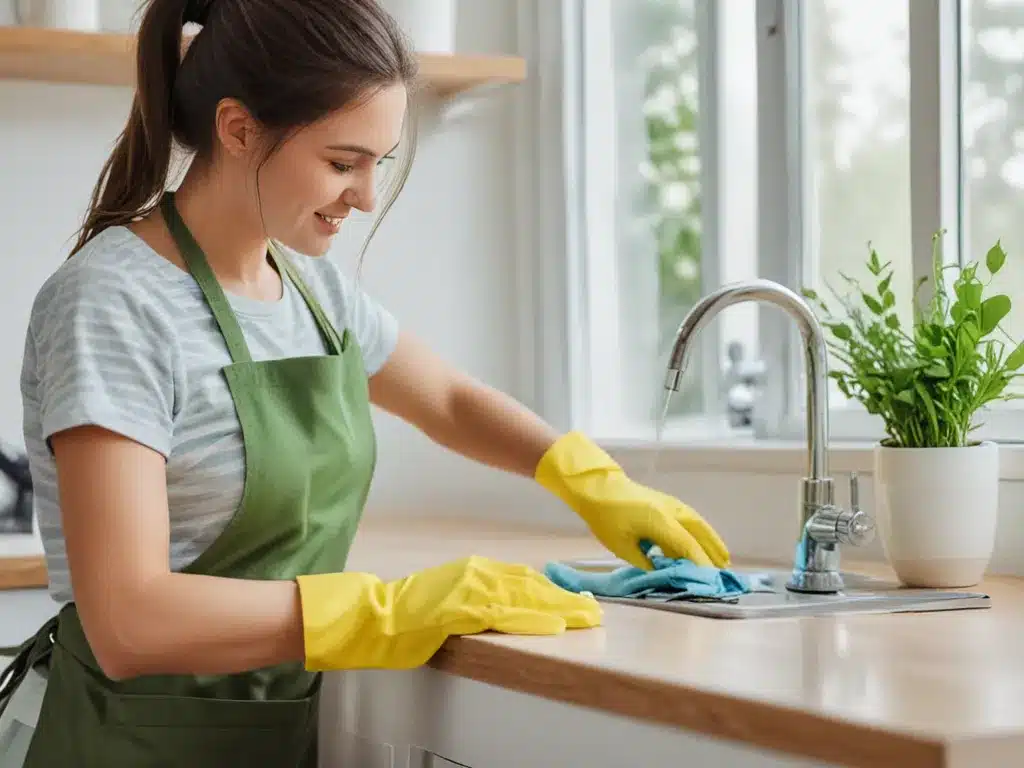Introduction
Going green with your home cleaning routine can feel overwhelming at first, but it doesn’t have to be! As a beginner looking to use more eco-friendly cleaning products, I’ve learned that small, simple changes can make a big difference for both my health and the health of the planet. Here’s my guide to getting started with eco-friendly cleaning as a beginner.
Why Go Green With Your Cleaning Routine?
Here are some of the main reasons I wanted to start using eco-friendly cleaning products in my home:
-
Avoid toxins and chemicals: Many conventional cleaning products contain harmful chemicals like bleach, ammonia, phthalates, and more. Eco-friendly products are made from plant-based ingredients that are safer for me and my family.
-
Protect the environment: Harsh chemicals end up going down our drains and into our waterways. Greener cleaners are biodegradable and less environmentally damaging.
-
Save money: Making your own natural cleaning products is cheaper than buying conventional ones. Plus, green cleaners are highly concentrated so you use less per bottle.
-
Improve indoor air quality: Toxic fumes from conventional cleaners can cause breathing issues and headaches. Natural cleaners don’t negatively impact indoor air quality.
Start With the Basics
As a beginner, I recommend starting simple and making small, gradual changes to your current cleaning routine. Here are some easy basics to begin with:
1. Soap and Water
One of the simplest green cleaning solutions is good old soap and water! Soap and water can be used to effectively clean countertops, floors, windows, appliances, and more. For tough jobs, use hot water to boost cleaning power.
2. Baking Soda
Baking soda is an effective eco-friendly cleaner for so many purposes. Its uses include:
- Scrubbing down sinks, tubs, and toilets
- Deodorizing fridges and carpets
- Polishing metal fixtures and jewelry
- Scouring pots and pans
3. White Vinegar
White vinegar is another versatile green cleaner to stock up on. Here are some ways to use it:
- Disinfecting countertops, toilets, floors
- Washing windows to make them sparkle
- Unclogging drains
- Removing grease buildup
4. Lemon Juice
Like vinegar, lemon juice has natural antimicrobial properties. It adds a fresh, clean scent while effectively cutting through grease and grime. Uses include:
- Disinfecting cutting boards
- Deodorizing garbage disposals
- Shining up stainless steel appliances
- Brightening up hardwood floors
Make Your Own Green Cleaning Recipes
Once you’ve tried out the basics, it’s fun to mix up your own homemade green cleaning recipes. Here are a couple easy ones to try:
All-Purpose Cleaner
- 1⁄2 cup white vinegar
- 1⁄4 cup baking soda
- 1⁄2 gallon hot water
Mix ingredients together in a bucket. Use on all kitchen and bathroom surfaces.
Foaming Bathroom Cleaner
- 1⁄2 cup liquid castile soap
- 1 tablespoon baking soda
- 1 tablespoon lemon juice
- 1 cup hot water
Combine in a foaming soap dispenser. Shake gently before each use. Spray on toilets, showers, sinks.
Shop Smarter
When buying pre-made natural cleaning products, read labels closely to ensure they really are eco-friendly. Look for plant-based ingredients like citrus oils, hydrogen peroxide, plant enzymes, lactic acid, and essential oils like thyme oil or pine oil. Avoid anything with “fragrance” instead of natural scents from essential oils.
Switch Gradually
The key as a beginner is taking it step by step. Don’t try to overhaul your entire cleaning routine overnight. Just start by switching out one conventional product at a time. Before you know it, you’ll have an arsenal of effective eco-friendly cleaners that get the job done without harming your family’s health or the environment.







